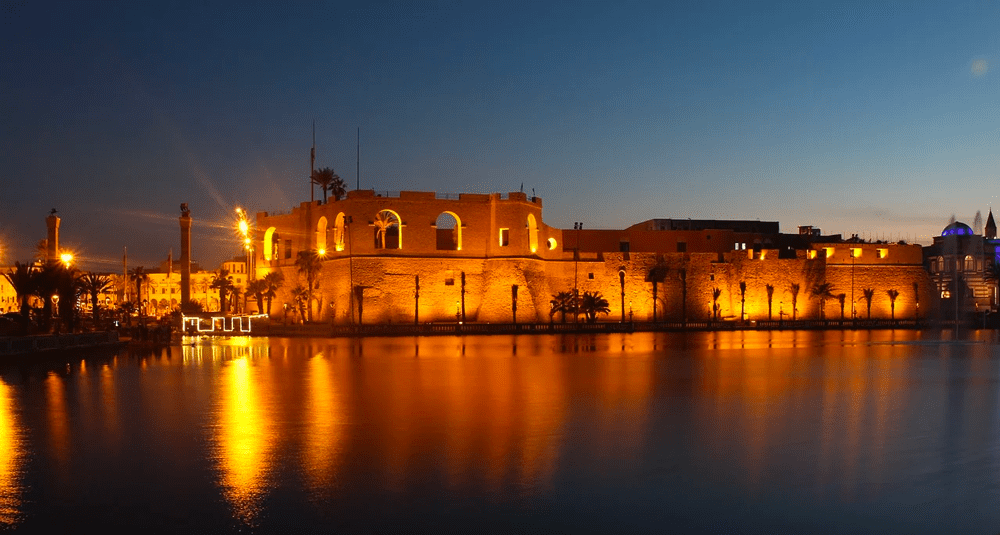What is the capital of Libya?
Last Updated:
Tripoli, the capital of Libya, is a large port city in the northwest of the country, on the shores of the Mediterranean Sea. With a population of around 1.3 million in 2024, it is Libya’s largest urban area and the country’s main political, economic and cultural center.
Founded in the 7th century B.C. by the Phoenicians, the city was originally known as Oea. It was part of the region known as Tripolitania, which means “region of three cities”, along with Sabratha and Leptis Magna. Over the centuries, Tripoli has been under the rule of various civilizations, including the Romans, Byzantines, Arabs and Ottomans, all of whom have left a lasting imprint on its architectural and cultural heritage.
Located at 32°52′ north latitude and 13°11′ east longitude, Tripoli enjoys a Mediterranean climate characterized by hot, dry summers and mild, wet winters. This strategic geographical position has made it a crucial port for Mediterranean trade throughout its history.
Libya’s main economic center, Tripoli is home to the headquarters of numerous national and international companies. The city’s economy is based primarily on the oil sector, which is the country’s main source of revenue. In addition to oil, Tripoli is also a center for manufacturing, trade and services.
Tripoli is an important cultural center, with several museums, theaters and educational institutions. The Red Castle Museum (As-Saraya al-Hamra) is one of the city’s main museums. It offers an insight into the rich and varied history of the region. The city is also home to Tripoli University, one of the country’s leading institutions of higher learning, which plays a key role in the training of Libyan professionals.
Tripoli’s old town, known as the Medina, is a labyrinth of narrow streets, bustling markets and historic buildings. Highlights include the Gurgi Mosque, built in the 19th century, and the Arch of Marcus Aurelius, a vestige of Roman times. Martyrs’ Square, formerly Green Square, is a vast esplanade in the heart of the city, often used for public gatherings and celebrations.
Since the overthrow of Muammar Gaddafi’s regime in 2011, Tripoli, like the rest of Libya, has faced political and security challenges. The city has experienced periods of instability due to conflicts between various factions and militias. Despite these challenges, Tripoli continues to play a central role in the country’s reconstruction and stabilization efforts.
Tripoli’s population is predominantly Arab and Sunni Muslim. The city is also characterized by its cultural diversity, reflecting the different historical influences that have shaped its development. Rapid urbanization has led to strong population growth, posing challenges in terms of infrastructure and public services.
Tripoli, with its rich history, strategic position and central role in Libya’s political and economic life, remains a city of major importance in North Africa. Despite the challenges it faces, it continues to embody the beating heart of the Libyan nation, linking a rich historical past to a future in search of stability and development.
You may also be interested in
geography

What is the capital of Libya?
Answer
Tripoli is the capital of Libya, located on the Mediterranean coast. Founded in the 7th century BC, it is the political, economic and cultural center of the country.